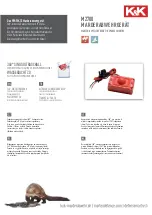
21
• If using extension wires, make sure they are of the same thermo-
couple material and grade; any dissimilar metal junctions will lead to
erroneous readings.
• Ungrounded thermocouples are recommended for optimal perfor-
mance and to prevent ground loops.
• Make sure the polarity is correct.
RTD Pt100
• Use a 3-wire Pt100
Ω
RTD whenever possible. All three wires must
have low lead resistance (less than 10
Ω
) and no resistance differen-
tials among them.
• If using a 2-wire RTD, jumper the two B-legs with a wire of equal
resistance.
• Make sure A and B leads are connected to the right terminals.
Current/Voltage
• The controller accepts 1-5V, 0-5V, 4-20mA, and 0-20mA DC signals. If
wiring for a voltage input, feed the signal directly to the input termi-
nals. For current inputs, first connect the 250
Ω
precision resistor that
comes with the unit.
• Make sure the polarity is correct.
Wiring Outputs
Before wiring the outputs, make sure the unit has the right kind of
control output, and that all the load handling devices conform to the
controller specifications. Note that it takes 5 seconds for the outputs to
activate after the power is turned on.
Refer to parameter “P-n1” and to the Table of Output Type Codes to
choose the preferred type of control action– reverse-acting or direct-
acting.
















































